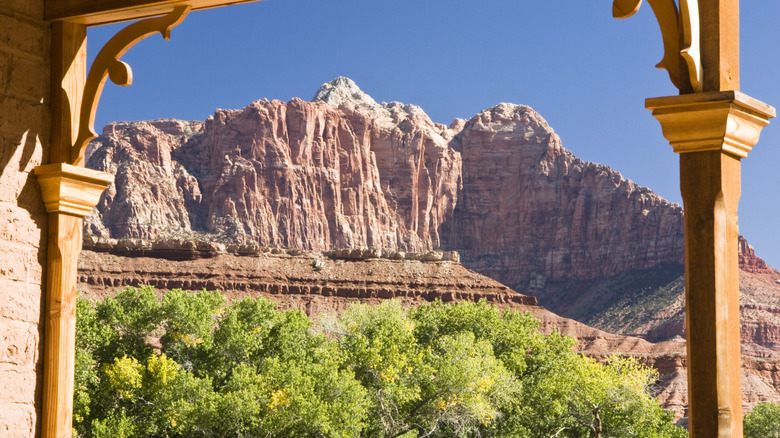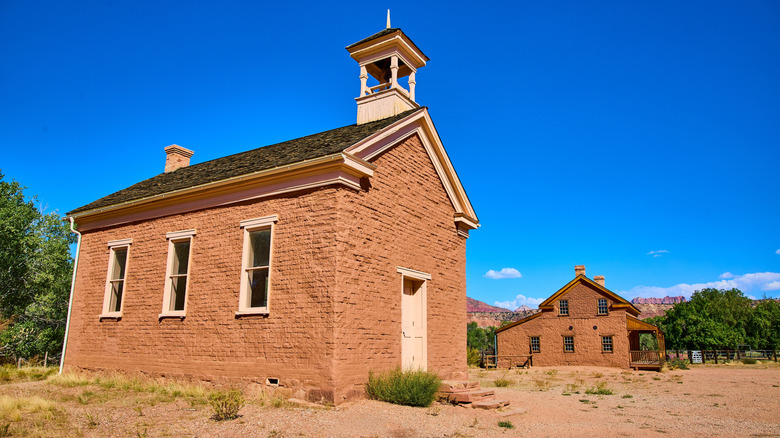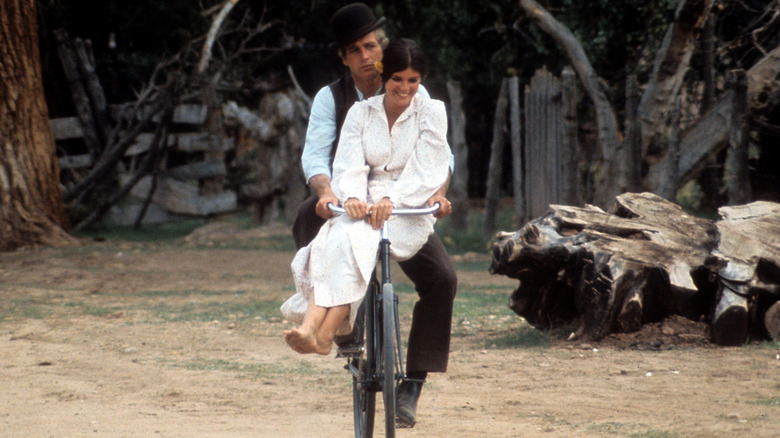Visiting Zion National Park might create the feeling of stepping onto another planet or in the middle of a vast landscape of canyons and red rocks. Visitors may be surprised to learn that Zion is surrounded by multiple cities and settlements, like the scenic, artsy town of Springdale, a hub for quirky shops, eateries, and outdoor adventures of its own. At Zion’s east entrance, the town of Kanab also has plenty to explore, but one settlement is even more surprising, and for reasons you might not expect.
Just over 9 miles southwest of the entrance to Zion National Park sits Grafton Ghost Town, a once bustling pioneer settlement that has since gained cinematic notoriety in multiple films and television shows. To visit Grafton Ghost Town from Springdale, take Zion Park Boulevard west into Rockville, turn onto Bridge Road, and follow it to 250 South until you arrive in Grafton. Las Vegas’ Harry Reid International Airport, the closest major airport, is under 3 hours away, while the St. George Regional Airport is an hour’s drive.
Though Grafton is no longer inhabited, it gives visitors a glimpse into Utah’s past with towering sandstone cliffs as a background. Those familiar with the film Butch Cassidy and the Sundance Kid may even recognize the surroundings, particularly the old schoolhouse. Even for travelers without a love for cinematic history, Grafton Ghost Town is a photogenic and historic stop to add to an itinerary for a scenic and unforgettable road trip through Utah’s National Parks.
What remains of Grafton Ghost Town
Today, Grafton is one of the most well-preserved ghost towns in Utah, which is impressive, considering the state is home to over 140 of them. Grafton was founded as a farm community in 1859 by a group of Mormon pioneers, making it over 160 years old. Despite its abandonment in the early 1900s, the town hasn’t been forgotten. In 1997, the Grafton Heritage Partnership was formed and has since preserved and made structural improvements to many of Grafton’s buildings.
Five preserved structures remain in the town, including a barn, an old schoolhouse, and three restored homes, each with signage commemorating its history. The Grafton Cemetery is also on site, with graves dating back to 1860. Many structures are open, allowing visitors to enter and explore exhibits inside, particularly the Ruby Rose cabin, the Louisa Marie Russell Home, and the Alonzo Russell Home.
The two-story adobe combination schoolhouse, church, and hall was decommissioned in 1921. During its restoration, the property received new doors, windows, and a new roof; however, it is typically not open for visitor entrance. There is no admission fee to visit Grafton Ghost Town, but be prepared as no services are available there. Grafton is a beautifully preserved depiction of the area’s Wild West history, with some considering it the most photographed ghost town in the West. The history of Grafton Ghost Town will be kept alive in more than just photos, though; it was also a setting for multiple major film productions.




